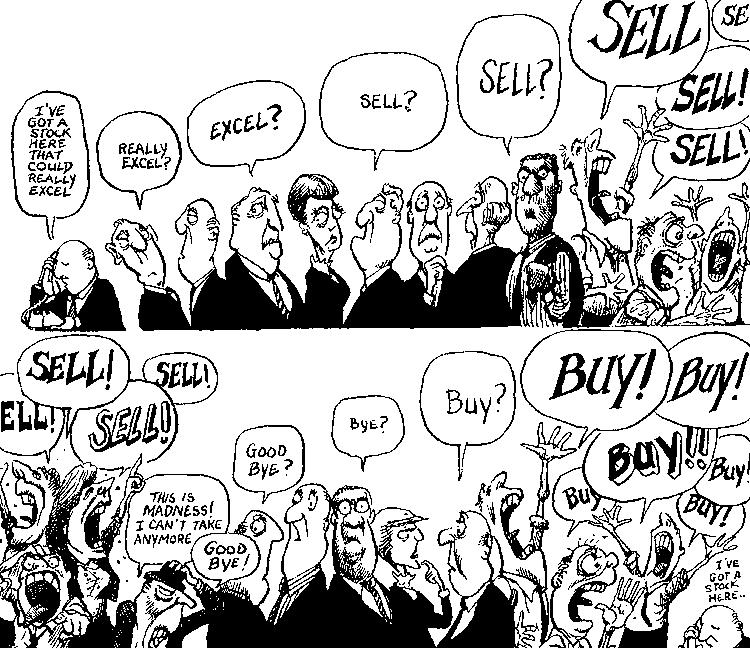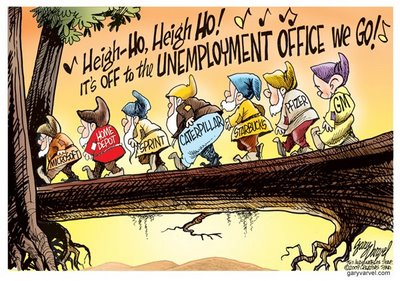1. Command - Centrally planned, the government owns land and capital, and controls labor
- Cuba (government controls every facet)
2. Traditional - Based on rituals, habits, and customs. Most decisions are made by the elder
- Tribes
3. Free Market - People and firms act on their own best interest. Allows buyers and sellers to exchange goods and services
- Hong Kong
4. Mixed - Government regulates businesses to protect the public's interest
- U.S., Canada, Mexico
- What goods and services should be produced?
- How will these goods and services be produced?
- Who will consume these goods and services?
Markets: Institution or a mechanism, allowing buyers and sellers to make trades (borrowing or paying)
- Product Market - Buyer is usually a consumer and the seller is a firm
- Factor Market - Factor of productions (CELL)
- Most important is labor
- Buyer = firm; sellers = factor owner
- If firms/businesses demand resources = Factor Market
- Customers buying products = Products Market
Households - Person or group of people that share their income
Firms - Organization that produces goods and services for sell
Gross Domestic Product (GDP)
- Total value of all final goods and services produced within the country's borders within a given year
- Includes: All production or income earned within the U.S. by U.S. and foreign producers
- Excludes: Production outside of the U.S. even by Americans
Gross National Product (GNP)
- Total value of all final goods and services produced by Americans in a year
- Includes: Production or income earned by Americans anywhere in the world
- Excludes: Production by non-Americans even in the U.S.
Calculating GDP
GDP = C + Ig + G + Xn
- C = Personal Consumption - purchases of finished goods/services
- Consumption spending
- Ig = Gross Private Domestic Investment - Investment spending
- New factory equipment
- Construction of housing
- Factory equipment maintenance
- Unsold inventory of products built in a year
- G = Government Spending - gov't purchase of goods/services
- Xn = Net Exports (Exports - Imports)
- French company purchases one-year membership at Partypeople.com, U.S. based company
Items that DO NOT count in GDP
- Gifts or transfers (Scholarships)
- Stocks and bonds
- Unreported business activities (Cash tips to waiters)
- Illegal activities
- Financial transactions between banks
- Financial transactions between banks and businesses
- Intermediate goods (what you use to make a certain product)
- Non-market activities (Volunteering or baby sitting)
Expenditure Approach - Income generated from production of goods/services
- C + Ig + G + Xn
Income Approach - All income generated from production of final output
- W + R + I + P
- W = wages, R = rents, I = interests, P = profits
Both sides have to equal!
Net National Product (NNP) = GNP - Depreciation (consumption of fixed capital)
Net Domestic Product (NDP) = GDP - Depreciation
National Income (NI) - Income earned by American owned resources, whether here or abroad
- NNP - Indirect Business Taxes (IBT)
- CE (compensation of employees) + RI (rental income) + II (interest income) + CP (corporate profits) + PI (proprietor's income)
- GDP - IBT - Depreciation - Net foreign factor payments
Disposable Personal Income (DPI) = NI - HT (household taxes) + GTP (government transferred payments)
Real GDP - Measures GDP in constant dollars, is adjusted for inflation, therefore it reverts to base year prices
Nominal GDP - Measures GDP in current prices, regardless of output
- P * Q = NGDP
GDP Deflate - Measure of the level of prices of all new domestically produced final goods/services in an economy
- (Nominal GDP / Real GDP) x 100
Inflation Rate - Rise in the general level of prices
- [(Price index in year 2 - Price index in year 1) / (PI in year 1)] x 100
Consumer Price Index (CPI) - Most widely used measure of the overall price level in the U.S.
- (Price of market basket in particular year / Price of same market in different year) x 100
Inflation - Rise in general price level (standard rate is 2-3%)
Deflation - Decline in general price level
Disinflation - Occurs when the inflation rate declines
Solving Inflation Problems
Rule of 70 - How many years it will take to double inflation (70 / inflation rate)
Real Interest Rate (cost of borrowing/lending money that is adjusted for inflation
= Nominal interest rate - inflation (unadjusted cost of borrowing and lending money)
Causes of Inflation
- Demand-pull: caused by an excess of demand over output that pulls prices upward
- Sources:
- Increases in government purchases
- Excessive increases in the money supply which creates a situation of hyper inflation (rapid rise/extremely high inflation rate)
- Rise in income as the economy approaches FE output (as workers earn more, demand increases)
- Cost-push: caused by a rise in per unit production due to increasing resource cost
- Sources:
- Supply shocks (dramatic rise in energy or raw material prices due to input shortages/growing demand for inputs)
- Price wage spiral (workers seek higher wages to offset rising consumer prices)
Effects of Inflation
- Anticipated - expecting, waiting for inflation
- Increases nominal cost of borrowing while unexpected reduces the real cost of borrowing
- Unanticipated - has stronger effects because those expecting may be able to adjust their work/spending to avoid/lessen effects
- Wages and penchants may have cost of living adjustments (COLAS) built in to offset anticipated inflation
- Hurts those with fixed incomes, savers, and lenders
- Helps borrowers (debt repaid in cheaper dollars)
Unemployment
- Unemployment - failure to use available resources
- New entrants, laid off, fired, quit, rentrants
- Employed includes self-employment
- Not included in the labor force -
- Armed forces, homemakers, students, retirees, disabled people, discouraged workers, prisoners, and mental patients
- Unemployment rate = (# of unemployed / # of total labor force) x 100
- Standard unemployment rate = 4-6%
- Four types of unemployment
- Frictional - temporary, transitional, short-term
- In between jobs/searching for job
- Graduates, fired/quit jobs
- Signals that new jobs are available
- Cyclical - caused by the recession phase of the business cycle
- Deficient demand for goods/services
- Structural - technological or long-term
- Automation - due to consumer taste, jobs may become obsolete
- Creative Destruction - New jobs are created, others are lost
- Seasonal - weather related of seasonal jobs
Full Employment (FE) = Natural rate of unemployment (NRU)
- It is equal to structural and frictional unemployment
- Full employment does not mean zero unemployment
Okun's Law
- Describes how unemployment relates to a nation's GDP
- States that for every 1% unemployment above the NRU, a negative GDP gap of 2% will occur
Unequal Burdens of Unemployment
- Rates are lower for white collar workers
- Teenagers have the highest rates
- Blacks have higher rates than whites
- Rates for males and females are comparable




Hey Catherine!
ReplyDeleteJust wanted to add to your notes a couple more formulas. (By the way, I love your use of cartoons. They are quite charming.)
Trade = Exports-Imports
positive # is surplus
negative # is deficit
Budget = Government purchases of goods and services + Government Transfer Payments - Government Tax & fees collections
positive # is deficit
negative # is surplus